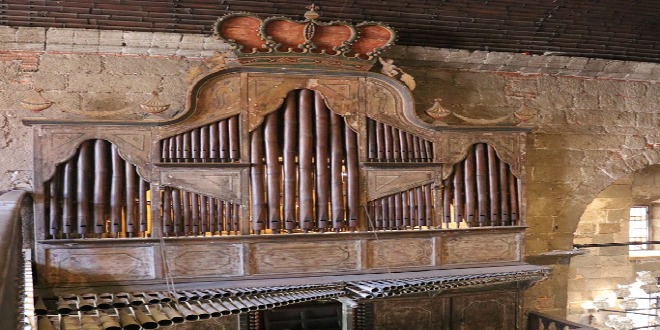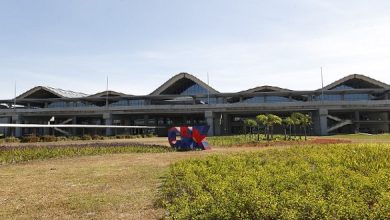
The Las Piñas Bamboo Organ, believed to be the largest and oldest of its kind, is a one-of-a-kind musical instrument that has fascinated music lovers and history aficionados worldwide. Recognized as a Philippine National Treasure, this remarkable organ can be found inside the St. Joseph Church located in Las Piñas City, Metro Manila. The organ’s exquisite sound and distinct bamboo-based construction make it a celebrated work of art.
History of the Las Piñas Bamboo Organ
The origins of the Las Piñas Bamboo Organ can be traced back to the 1800s when it was built by the local community in Las Piñas led by Spanish missionary Fr. Diego Cera. Fr. Cera, who was assigned to construct a new church in St. Joseph Parish, was also known for his passion for music and musical instrument creation. He was inspired to use bamboo, which was readily available in the area and produced a unique sound.
It was said that Fr. Ignacio Villanueva, a German Jesuit priest who built a pipe organ in Manila during the 18th century, taught Fr. Cera how to construct pipe organs. Bamboo used for the organ was sourced from the Las Piñas and Zapote forests, carefully selected based on thickness and sound quality. Fr. Cera used a special technique to treat the bamboo, involving soaking it in saltwater and drying it in the sun for several months, resulting in improved durability and preservation.

Construction of the Las Piñas Bamboo Organ
The remarkable Las Piñas Bamboo Organ was constructed over an eight-year period from 1816 to 1824, using only limited resources and technology available at the time. The organ boasts 1,031 bamboo pipes, with varying lengths that range from 8 inches to 16 feet, all controlled by a keyboard with 13 ranks and 14 stops. The organ’s wooden case is adorned with intricate carvings and decorations, crafted by local artisans. It is a testament to the ingenuity and creativity of Fr. Diego Cera and the skilled craftsmanship of Filipino artisans, who together achieved the construction of a unique, functional, and stunning musical instrument.

Short history of the Bamboo Organ
1816 – Cutting of the bamboo and selection of wood
1821 – Completion of the Bamboo Organ, except for the reed stops
1824 – Addition of the 122 horizontal reed pipes
1880 – Bamboo Organ and Church severely damaged by three earthquakes. The Bamboo Organ is disassembled and the pipes are placed in the old sacristy
1882 – A typhoon blows up the roof, the chest of the Bamboo Organ suffers additional damages
1888 – The church is rebuilt. However, the Bamboo Organ remains unplayable for the next decades
1911 – The Bamboo Organ is rediscovered by tourists
1917 – Only two stops of the Bamboo Organ are repaired
1932 – An electric motor is installed to supply the wind
1943 – Partial repairs are made; 1961 – Additional partial repairs are made
1972 – Award of the contract for the restoration of the Bamboo Organ to Johannes Klais Orgelbau KG in Bonn, Germany
1973 – (June 29) The complete Bamboo Organ is shipped to Bonn Germany
1975 – (Feb 17) The restored Bamboo Organ is played again for the first time at the Klais factory in Bonn, Germany
1975 – (March 13) The complete Bamboo Organ is flown back to the Philippines via Sabena Airlines
1975 – (May 9) Inaugural concert of the Bamboo Organ by Wolfgang Oehms, an organist of the Trier Cathedral, Germany
(Source: Las Piñas Bamboo Organ Museum)
The Sound of the Las Piñas Bamboo Organ
The Las Piñas Bamboo Organ produces a distinctive and captivating sound that is soft and mellow, reminiscent of the sounds of nature. It is a versatile instrument that can play various musical genres, including classical, religious, and folk music, and has been featured in many concerts and events over the years.
The unique sound of the organ is attributed to its bamboo pipes, which produce a warmer and gentler tone compared to traditional metal pipes. The natural vibrato of the bamboo pipes also adds to the organ’s unique sound. Furthermore, the acoustics of the St. Joseph Church, where the organ is housed, were specifically designed to amplify and enrich the sound of the bamboo organ, making it even more exceptional.

The Significance of the Las Piñas Bamboo Organ
The Las Piñas Bamboo Organ holds a significant place in Philippine history and culture as a symbol of the country’s resilience and rich cultural heritage. It has endured natural calamities and conflicts, and has come to represent the strength and perseverance of the Filipino people.
Beyond its musical function, the bamboo organ is a tribute to the creativity and resourcefulness of the Filipino people. Its construction using bamboo, a readily available material, is a testament to the ingenuity and adaptability of the early Las Piñas residents, known for their ability to maximize limited resources. The bamboo organ is a remarkable and distinctive example of Filipino craftsmanship and cultural heritage.

How to get to the Las Piñas Bamboo Organ
The Las Piñas Bamboo Organ can be found inside the Saint Joseph Parish located at 1742 Quirino Avenue, Las Piñas City. If you are coming from Ninoy Aquino International Airport (NAIA), there are several transportation options available depending on your preference and budget.
The most convenient and quickest way is to take a taxi or ride-hailing service like Grab or Angkas. This ride will take around 30 minutes to an hour, depending on traffic and weather conditions. If you prefer having your own car and driver, you can rent a car from one of the car rental agencies located at the airport. Although more expensive, it offers more flexibility and convenience.
For a budget-friendly option, you can take public transportation from NAIA to Las Piñas. From the airport, take the airport shuttle bus or jeepney to Baclaran or Pasay. From there, take a bus or jeepney to Las Piñas. Once you arrive in Las Piñas, take a tricycle or taxi to St. Joseph Church where the Las Piñas Bamboo Organ is located.
If you’re coming from other parts of Metro Manila, there are several transportation options available as well. From LRT Line 1, take the train from Roosevelt Station to Baclaran Station, and from there, ride a bus or jeepney going to Alabang-Zapote. If you’re coming from Alabang, ride the traditional or modern jeep with the signboard Las Piñas Bayan or Baclaran via Kabihasnan and alight in front of the St. Joseph Cathedral.
If you’re coming from España or Quezon Avenue, take a jeep going to Lawton and alight at the Philippine Post Office. From there, take a UV Express to Alabang-Zapote.
It’s essential to note that traffic in Metro Manila can be unpredictable, so plan your trip accordingly and consider traveling during off-peak hours to avoid heavy traffic congestion.



Other sites to visit
Beside the St. Joseph Parish, there is a museum solely dedicated to the Las Piñas Bamboo Organ. This museum offers a chance for visitors to discover more about the history and difficulties of owning and preserving this Philippine National Treasure. In addition, there is a gift shop where visitors can purchase souvenirs and keepsakes related to this unique musical instrument.

Located a short distance from the museum is Caritas’ Segunda Mana, a thrift store offering high-quality second-hand items and clothing at affordable prices. Visitors can enjoy browsing through the wide selection of goods and can also negotiate with the friendly and accommodating cashier for an even more reasonable discount.




